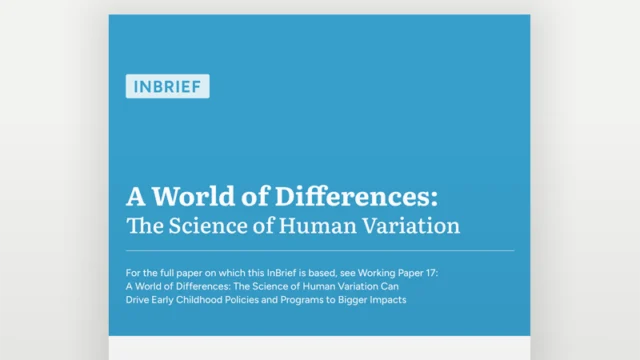InBrief | A World of Differences: The Science of Human Variation

It is now widely accepted that investing in early childhood development helps build the foundations of a healthy, productive, and equitable society. Guided by that knowledge, a range of broad-based programs and targeted services make a significant difference for millions of young children, yet a closer look shows that some children benefit greatly, some benefit less, and some not at all. Within this variation lies opportunity. Increasing effects for all children— especially those who benefit the least—may be the key that unlocks greater impacts for society.